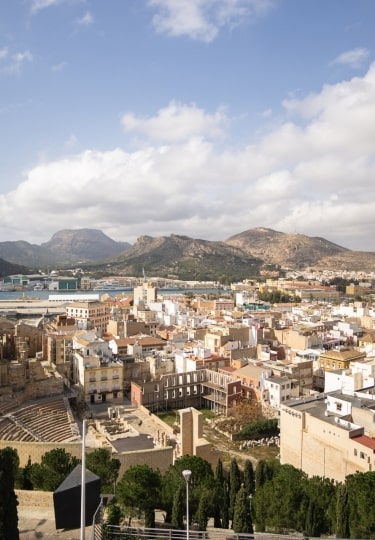Visiting Cartagena, Spain is akin to exploring one big, open-air museum. The ancient port is hidden away behind a natural harbor encircled by protective hills. Waves of settlers have taken advantage of this fortuitous situation, and every time foundations are dug for a new building, more layers of history are unpeeled.
You’ll find Roman villas and baths, a harbor used by the Phoenicians, chunky 18th-century defensive walls, and polished marble streets lined with elegant art nouveau architecture.
There’s a collection of excellent museums, a lively cultural scene, and an impressive array of tapas bars and restaurants to explore.
Why Visit Cartagena?
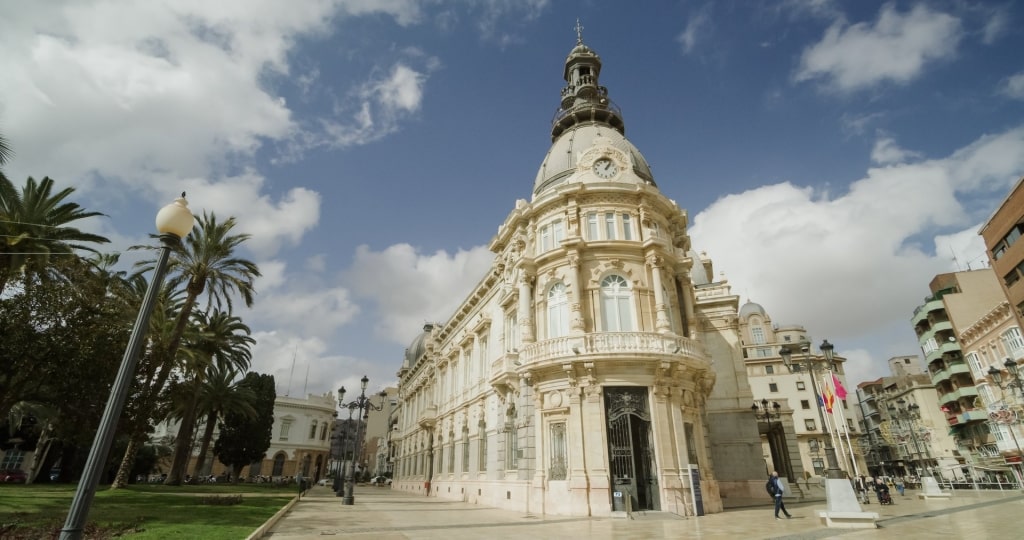
Town Hall Square
Strategically positioned on the Costa Cálida, a sunny shoreline in Spain’s Murcia province, Cartagena is a three-dimensional history lesson.
It’s one of the most important Roman sites in Spain, where more is constantly being uncovered. To reach the magnificent amphitheater, you actually walk under the modern city, which is thought-provoking in itself.
You’ll see more than Roman history, too. The strategic position of a sheltered natural harbor has attracted the attention of the Carthaginians, Phoenicians, and the Moors as waves of settlers invaded Spain.
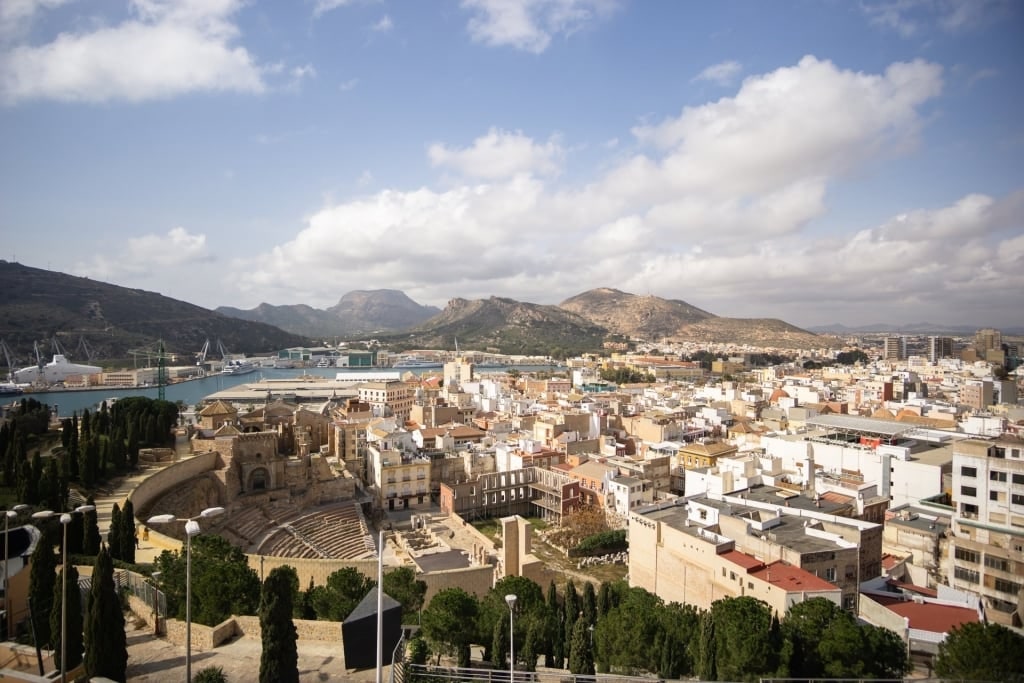
Cartagena
At first glance, you might feel the surrounding countryside lacks the classic beauty that Spain is known for. But once you’re strolling the polished marble streets or palm-lined waterfront, exploring a series of superb museums, and marveling at intricate modernista architecture, you’ll quickly realize what a well-kept secret this underrated city really is.
History & Culture
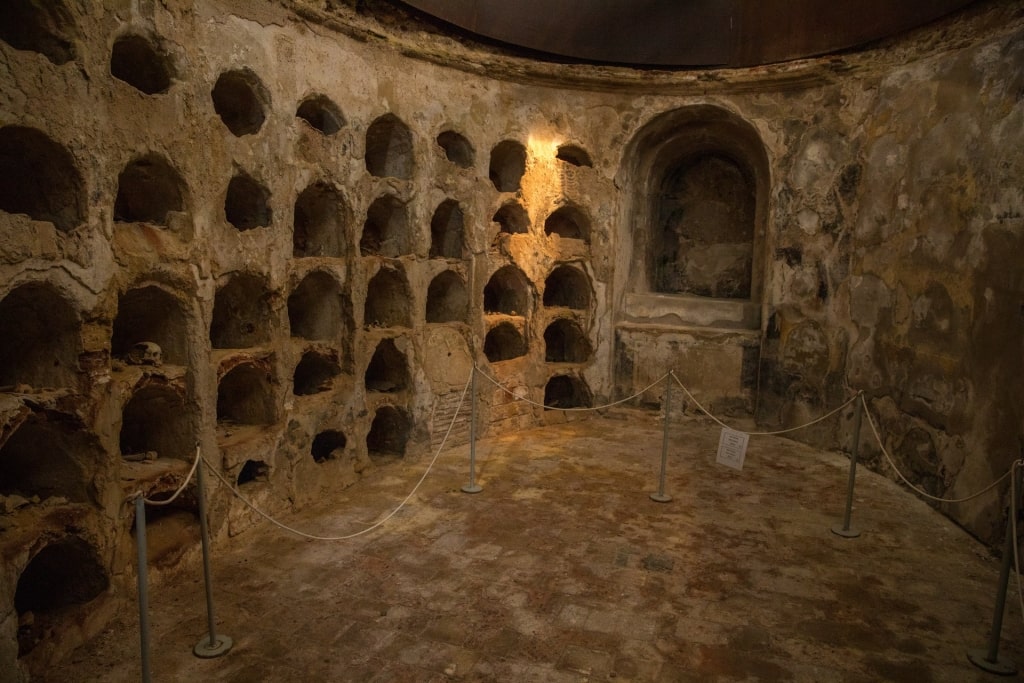
Punic Wall
Although human remains dating back 1.3 million years have been found in the vicinity, making this area one of the first in Europe to be inhabited, Cartagena itself was founded by the Carthaginian general Hasdrubal, brother-in-law of Hannibal, in 227 BC.
It was named after Carthage in what’s now Tunisia. You can still see remnants of the 227 BC Punic Wall, which encircled the original city, near the tourist office.
The Carthaginians were eventually ousted by the Romans, who developed Carthago Nova (New Carthage) as an important naval base. The port remains a major base for the Spanish navy today, thanks to its sheltered harbor.
Much of southern Spain bears the influence of the North African Moors, too, who occupied the region for centuries before being driven out in the Christian reconquest. The Moors left many fine monuments behind, including the foundations of the castle that gazes down over the old city.
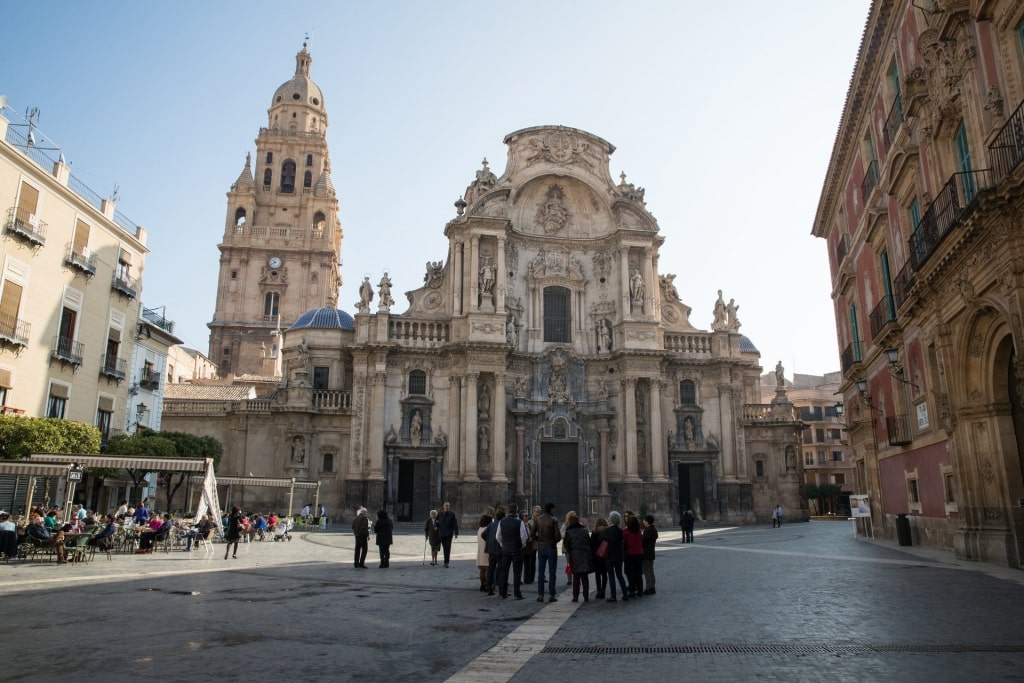
Murcia
Cartagena became rich in the late 19th and early 20th centuries from mining and heavy industry. There’s evidence of this wealth in the grand, ornate buildings lining the streets in the city center, created by some of the finest modernista architects of the day.
During the Spanish Civil War (1936-1939), much of the Republican fleet was based here and the city suffered heavy aerial bombardment. If you’d like to know more about modern Spanish history, visit the Refugio Museo de la Guerra Civil on Conception Hill. A former refuge for citizens of Cartagena, this shelter is now a museum depicting the horrors and hardship of the war.
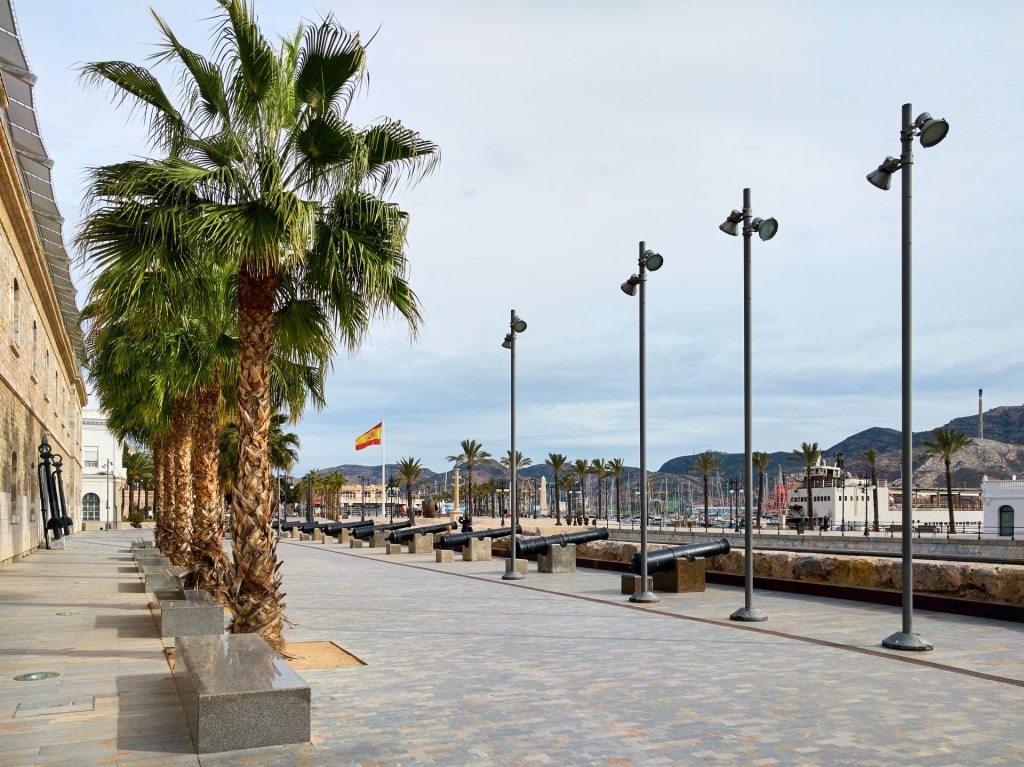
Naval Museum
Today, Cartagena remains an important naval base; if you’re interested in maritime history, you’ll be intrigued to know that the inventor of the first battery-powered submarine, Isaac Peral, came from Cartagena. You can see a prototype of his 1888 sub in the city’s naval museum.
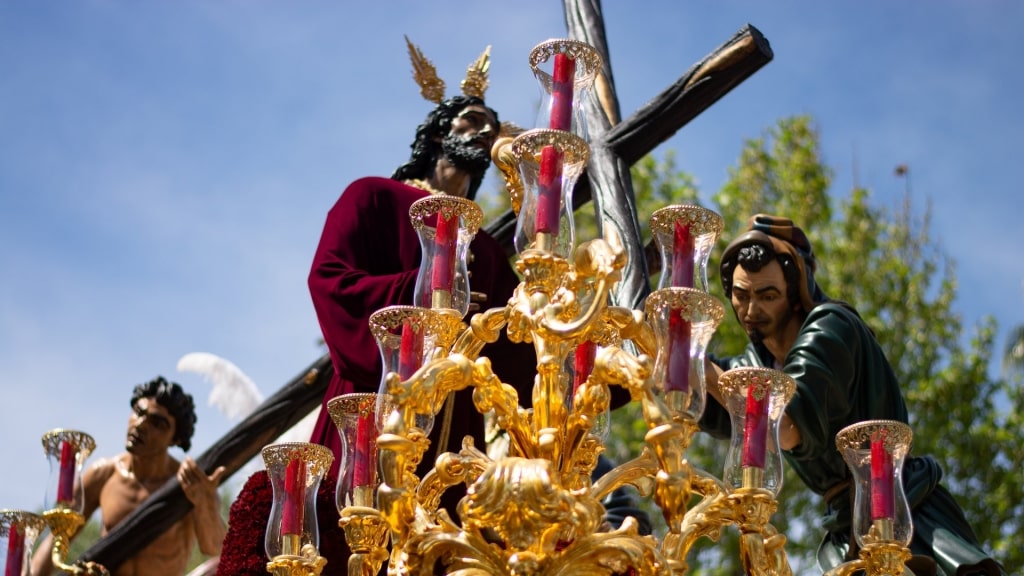
Semana Santa procession
Cartagena is a city of festivals, and you could be lucky enough to catch one. Around Easter, the Semana Santa (Holy Week) processions are some of the most complex and profound in Spain.
June is regatta month, with yachts from all over Europe competing in top-level races, while in July, people flock from all over Spain for Mar de Musicas, one of the top world music festivals.
If you’re visiting in September, you could witness the spectacular historical reenactment of one of the battles between the Carthaginians and Romans in the Second Punic War, 2,200 years ago. Some 4,000 locals take part in this dramatic event.
Tips for Visiting Cartagena, Spain
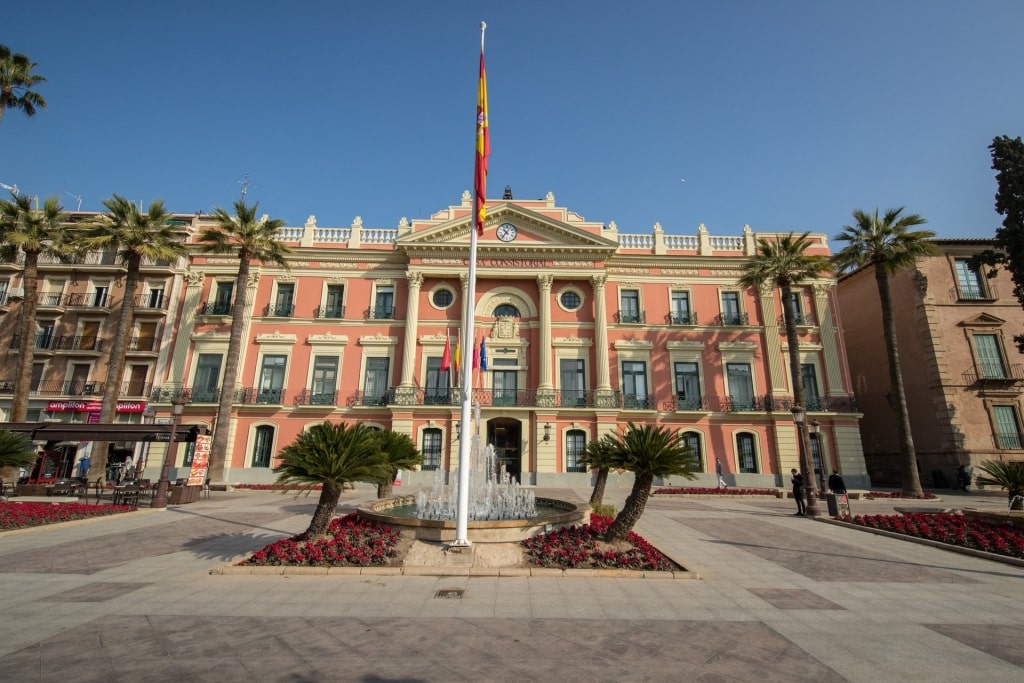
Murcia
The city itself is compact, so the best way to spend your day is on foot. Explore the palm-lined waterfront, the chunky Muralla del Mar (the late 18th-century defensive walls), the old center, the castle, and some of the Roman archaeological sites.
The biggest dilemma you’ll have is which of the many excellent Spanish museums to fit in, too. Realistically, in the space of a day, you could take in the Roman Amphitheater and the Underwater Archaeology Museum, with time to spare for a quick visit to the castle, as well as strolling the old town, admiring the modernista architecture and stopping for tapas.
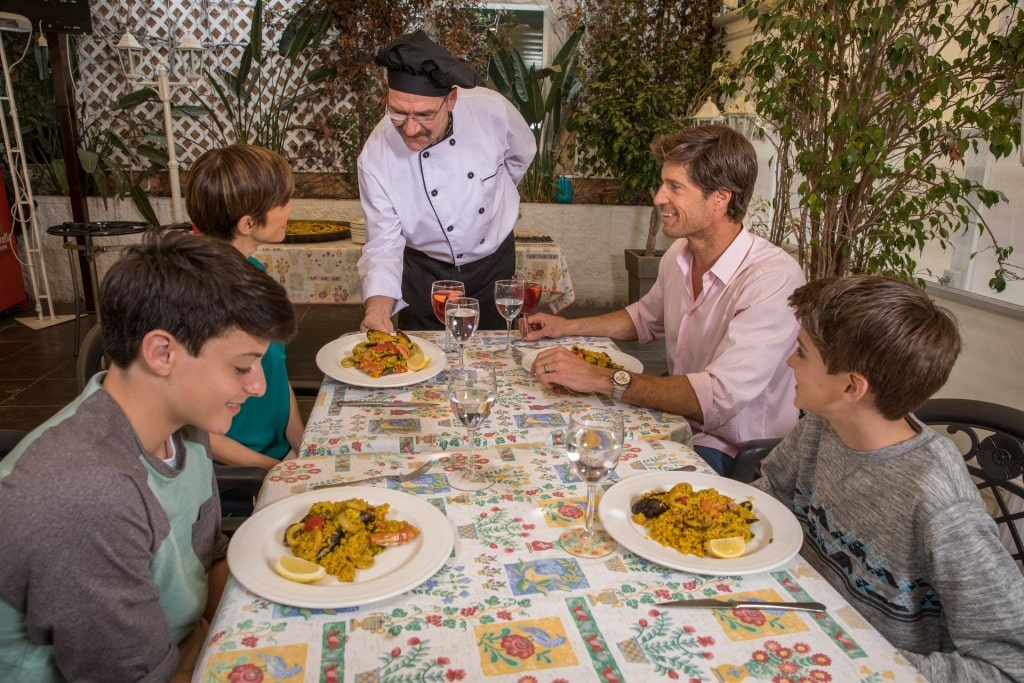
Restaurant in Cartagena
If you’re visiting in the summer, you don’t want to rush it. Temperatures will be high in the middle of the day and it helps to emulate the locals by enjoying a relaxing lunch in the shade somewhere.
If you prefer not to walk, there’s a trolley train that trundles around the major sites, as well as other modes of transport, not least Segway tours of the city center.
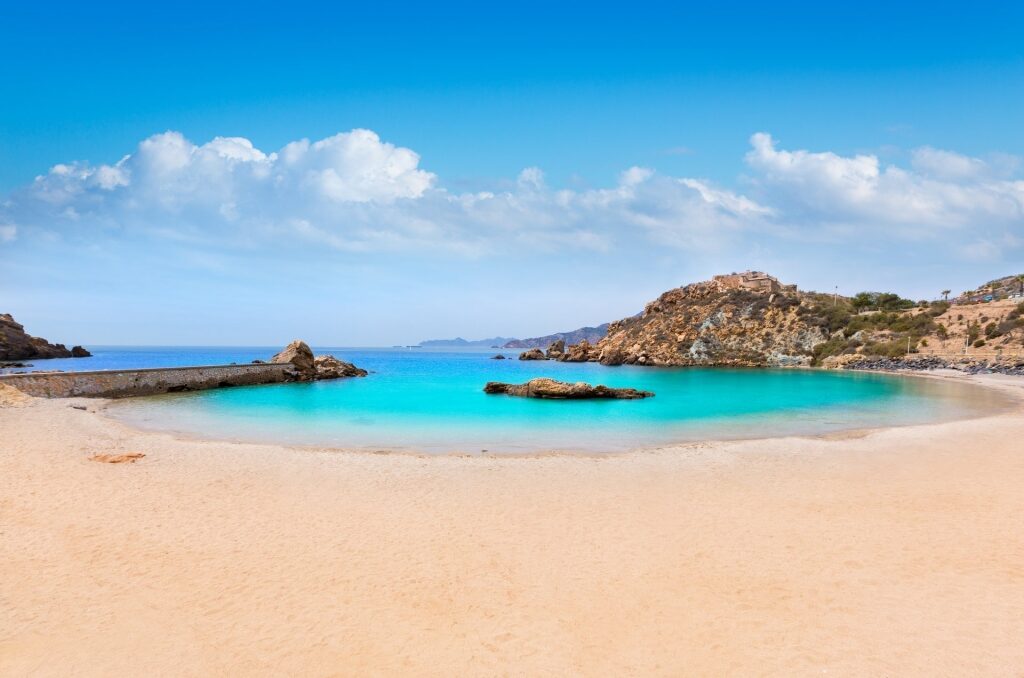
Cala Cortina
While there is an attractive beach, Cala Cortina, near the city, Cartagena packs in so much history that you’re really better off spending your time exploring the urban area. If you do want some beach time, though, this sandy cove is just two-and-a-half miles away and easily reachable by taxi.
Things to Do & Attractions in Cartagena
Discover the Roman Theater Museum
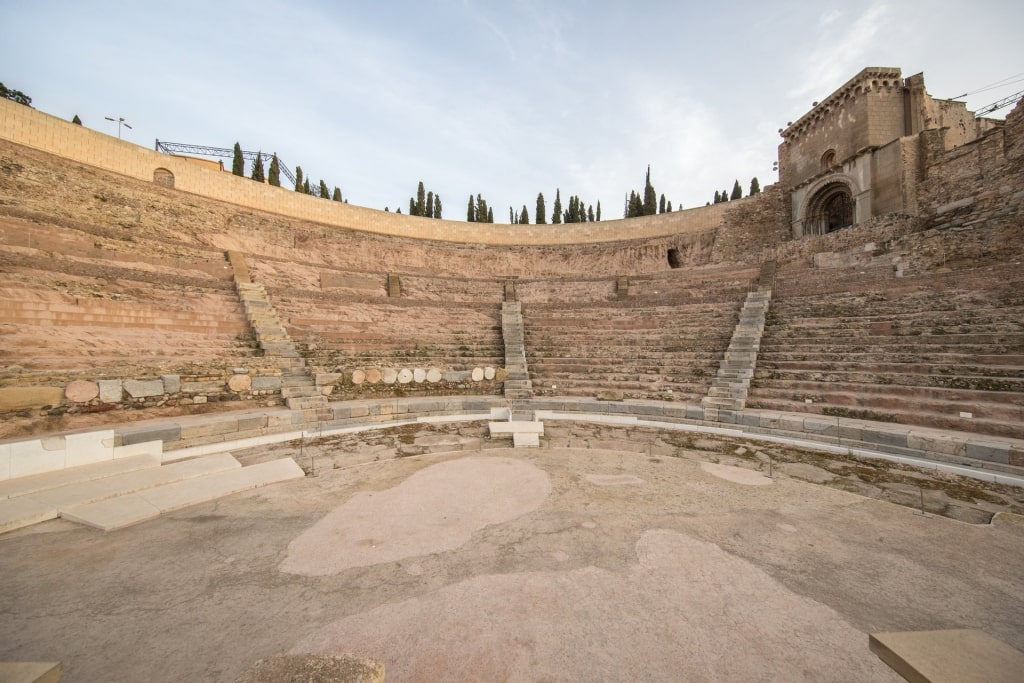
Roman Theater Museum
One of the most beautiful places in Spain, this astonishing amphitheater was built between the fifth and first centuries BC. In its heyday, it could hold some 6,000 spectators.
Over the centuries, this Spanish landmark fell into disrepair and actually physically vanished as one building after another was constructed on top of the ruins.
At one point, a marketplace and a bullring occupied the site over the ancient tiers of stone. Excavations only began in 1988, so what you see today is an incredible archaeological achievement.
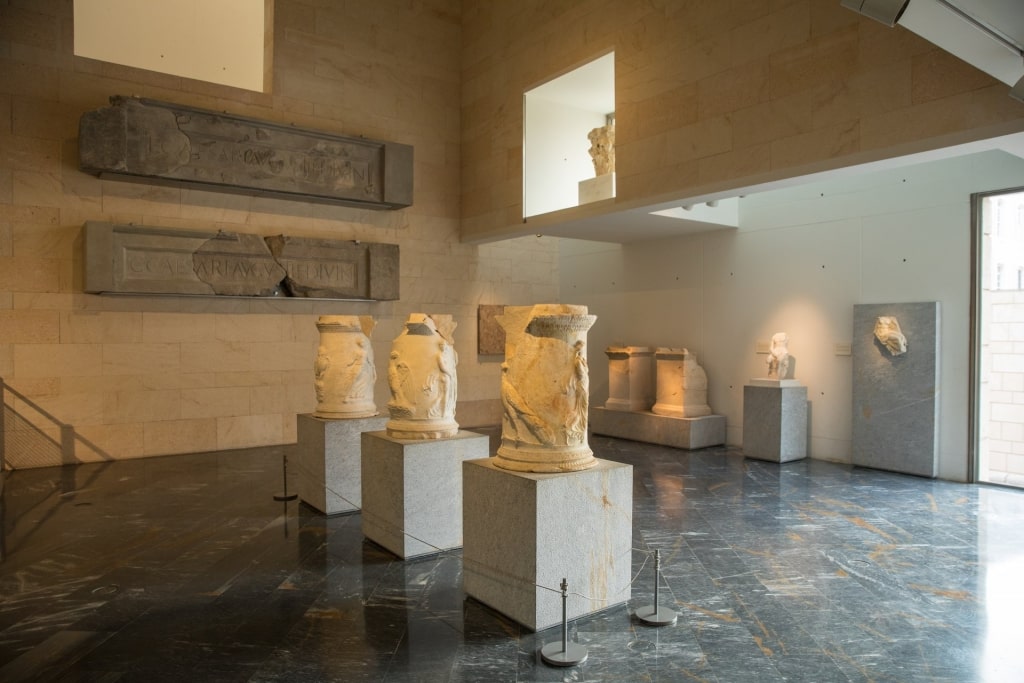
Roman Theater Museum
The first part of the visit takes you through a small museum where you can see statues, columns and earthenware from around the excavation site.
You’ll enter the museum on the Town Hall Square and actually walk through an underground corridor, under the modern city, emerging into the sunlight within the amphitheater itself.
Explore the Barrio del Foro Romano
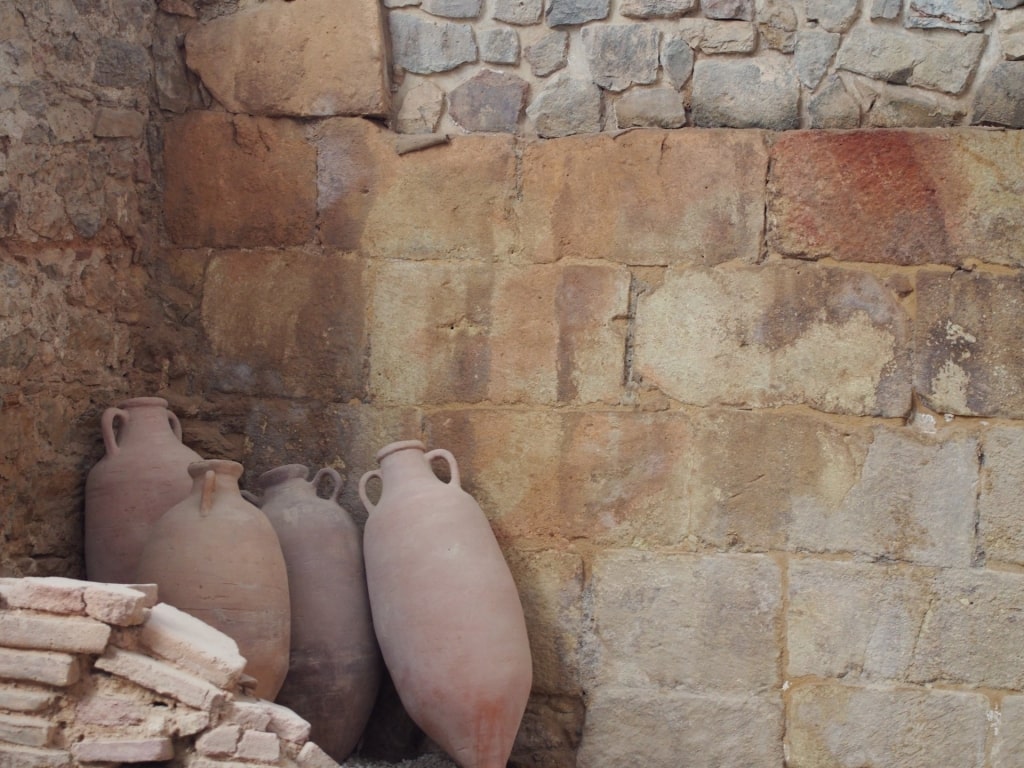
Barrio del Foro Romano
In the first century BC, the port was linked to the forum in the city center by an avenue, the remains of which you can see at the base of Molinete Hill. The area was only excavated in 2008.
Now, it’s a large and impressive archaeological site with walkways alongside the excavations. You’ll see the old thermal baths, the remains of the entrance portico, richly decorated marble pavements, and intricate decorations hinting at the decadence of the Roman Empire.
For further insights into Roman lifestyle, head for La Casa de Fortuna on Plaza Risueno. This is believed to have been the home of a wealthy Roman family some 2,000 years ago and retains some beautiful wall paintings and mosaics.
Learn About Underwater Archaeology
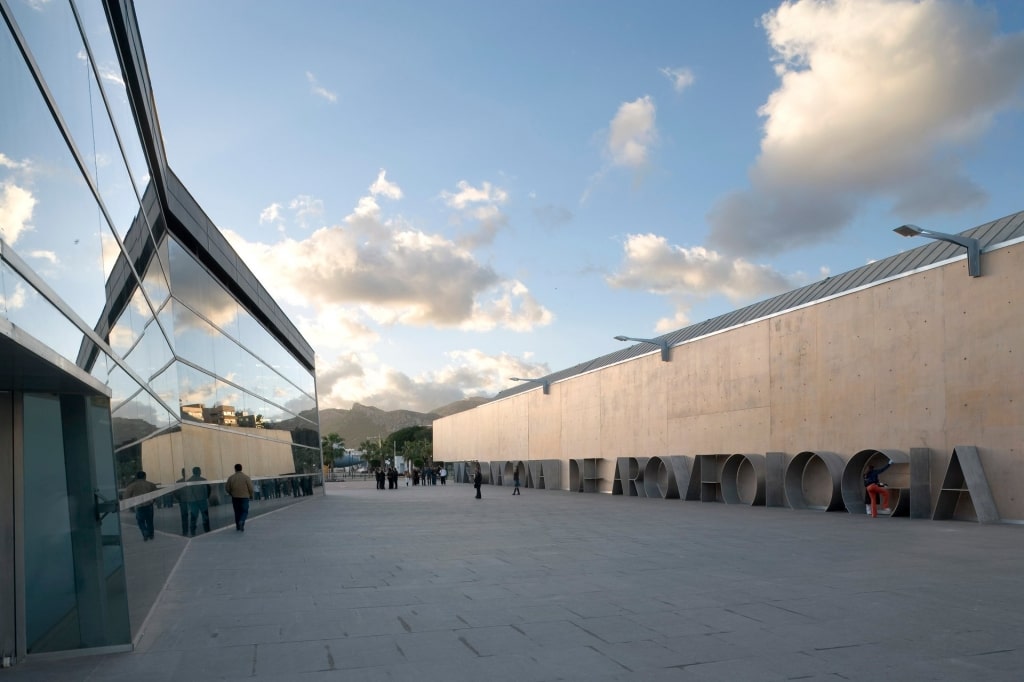
Museum of Underwater Archaeology Photo by Vazquezconsuegra on Wikimedia Commons, licensed under CC BY-SA 4.0
Located on Paseo de Alfonso XII by the port, the intriguing and cleverly laid out Museum of Underwater Archaeology (ARQUA) reveals the secrets of underwater archaeology.
You’ll see how archaeologists work in the depths of the sea and then learn more about the history of the Mediterranean. As well as movies and interactive displays, you can look at a replica of a Phoenician trading vessel and admire various historical treasures uncovered off the coast here.
Admire Modernista Architecture
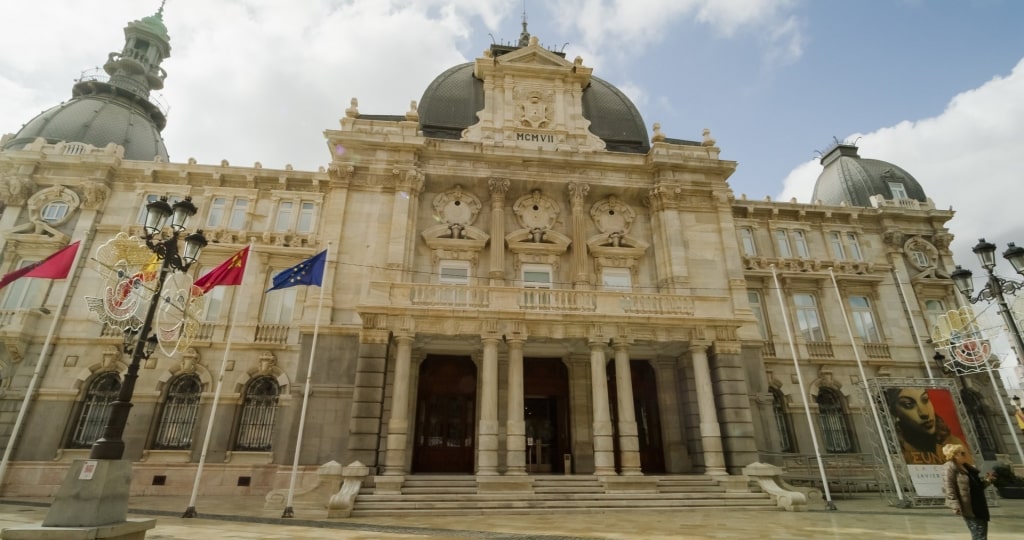
Town Hall Square
Stroll along Calle Mayor, the main street leading from the Town Hall Square (Plaza del Ayuntamiento), and you’ll see a fine array of modernista buildings, a testament to the city’s wealth in the late 19th and early 20th centuries.
Some of these are the work of Victor Beltri, a disciple of Barcelona’s legendary Antoni Gaudi; look for Casa Cervantes on Calle Mayor itself, and Casa Maestre on Plaza San Francisco.
You’ll see enclosed balconies and elaborate wrought-iron decoration, as well as bronze reliefs. Look out for the ornate Palace of Aguirre, next to MURAM, the Regional Modern Art Museum, and the neoclassical Palacio Pedreño.
Climb Up to Castillo de la Concepción

Castillo de la Concepción Photo by Rafa Esteve on Wikimedia Commons, licensed under CC BY-SA 4.0
This chunky castle, on a hilltop overlooking the city center, has had many uses throughout history. The site has served as a Roman temple, a Moorish fortress in the 12th century, a defensive castle in the medieval era, and a lookout point during the Spanish Civil War.
Much of what you see today dates to the 14th century, built over Roman ruins. You can walk up in around 20 minutes for sweeping views over the city, or take the scenic elevator from Calle Gisbert, which emerges onto a walkway connected to the castle. There’s an interpretation center telling you about 2,500 years of the city’s history.
Visit an Andalusian Stud Farm
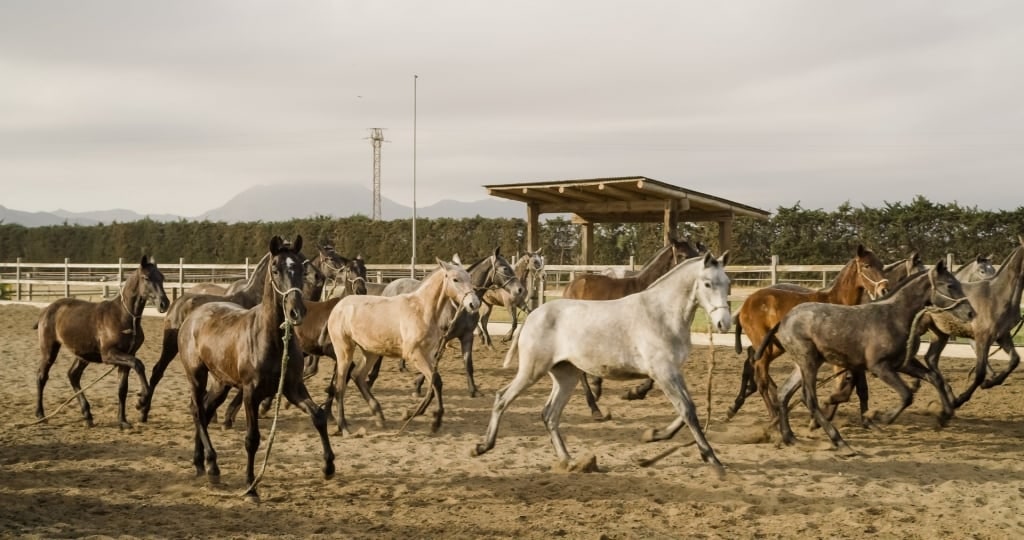
Conesa Stud Farm
If you love horses, this is an unmissable experience. The graceful Andalusian horse, bred for 2,000 years in southern Spain, is famous for its strength, temperament, showy looks, and ability to learn astonishing balletic moves.
A visit to the Conesa family’s working stud farm, in the countryside outside the city, is a true insight into Spanish culture and the passionate connection between Spaniards and their horses.
You’ll see a spectacular stampede as the mares and foals are released into their pasture, and you’ll meet some of the priceless stallions and learn about the daily working of the stud.
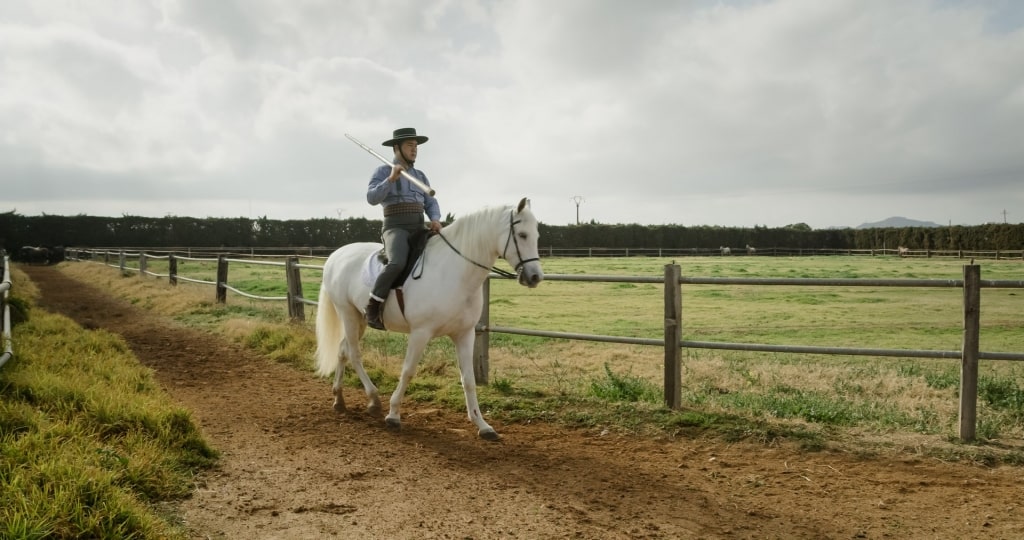
Conesa Stud Farm
There’s a chance to taste some local specialties, including olives, bread, jamon (cured ham), and tortilla, with a glass of wine, before a demonstration of dressage and “dancing” by some of the horses and riders.
Food & Drink
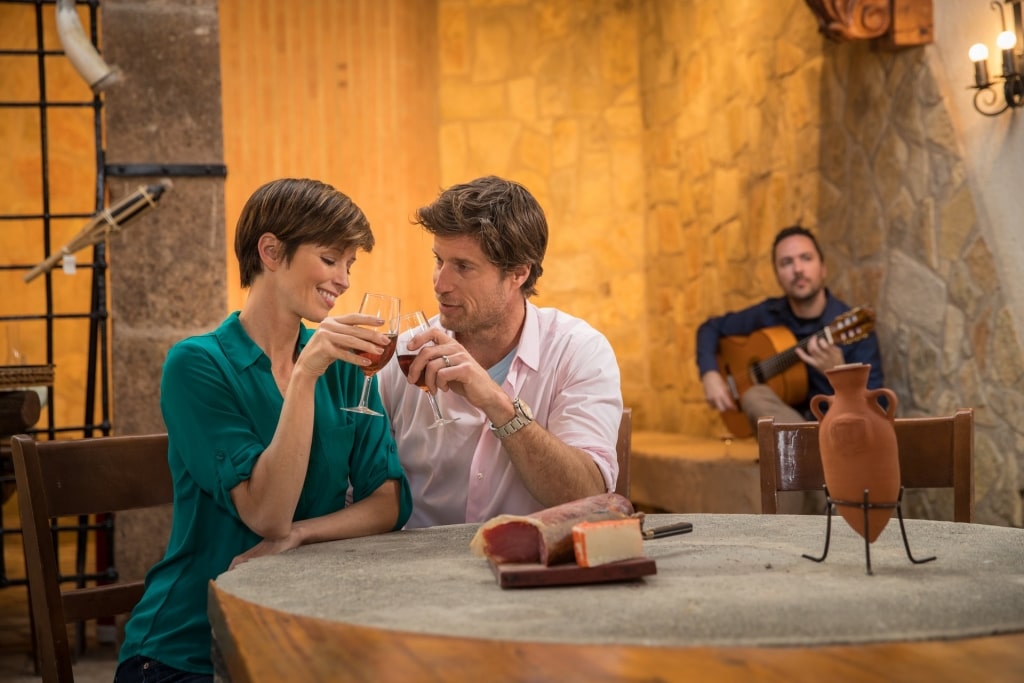
Bodega La Fuente
As you’d expect in Spain, there’s no shortage of tapas bars for tasty snacks that can be enjoyed at any time of day with a cold beer or a glass of dry white. Try Calle Jara for fish tapas at Bodega La Fuente—anchovy is a specialty here.
For a longer lunch, and an introduction to some classy Murcian specialties, head for El Barrio de San Roque on Jabonerías. Tuna tartare, shrimp carpaccio, creamy croquetas, cod tempura, and oven-baked sea bass all feature, while there’s an array of arroces, rice-based dishes using rice grown in Valencia province to the north.
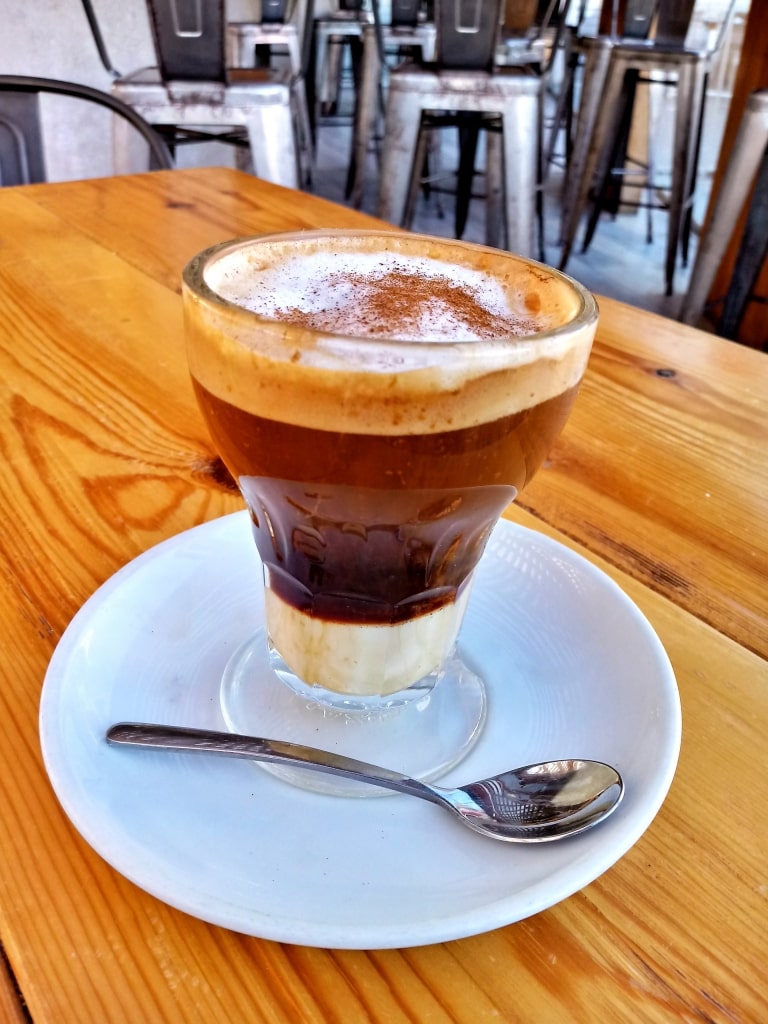
Asiatico
An acquired taste in Cartagena is Cafe Asiatico, a local coffee drink made from coffee, condensed milk, evaporated milk, cognac, and a local spirit with herbal, vanilla flavor, called Liquor 43.
This concoction is presented in layers, with the condensed milk at the bottom, the booze and coffee resting on this base, with the evaporated milk carefully poured to create a creamy top layer, garnished with cinnamon powder and lemon peel. Possibly not one for breakfast, unless you’ve got a strong constitution, but you’ll see coffee shops selling it all over the city center.
Alternatively, satisfy a sweet tooth with churros, deep-fried strips of donut, dipped in rich chocolate; this is a much-loved Spanish specialty.

Mercato Santa Florentina
For foodie souvenirs or a gourmet picnic, head for Mercato Santa Florentina (in the mornings), where you’ll see colorful displays of fruit and vegetables, fish, meat, cheese, olives, and wine.
Browse the colorful stalls, sample the local jamon and creamy manchego cheese, buy jars of anchovies in olive oil, and pack up a picnic to enjoy by the waterfront.
Best Time to Visit Cartagena, Spain
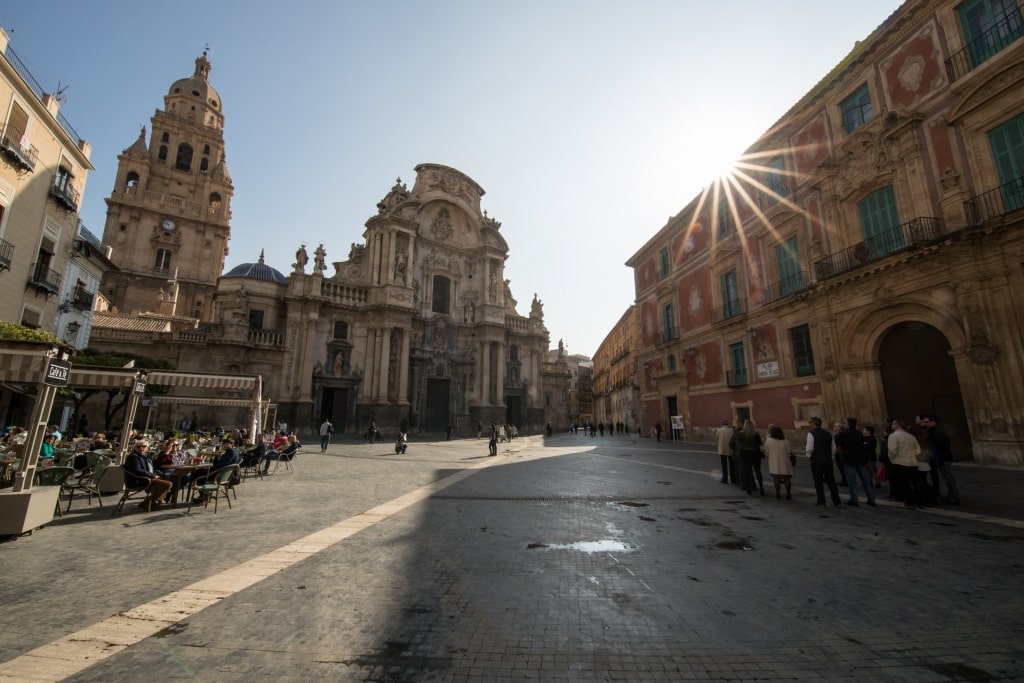
Murcia
Cartagena enjoys a typical climate of southern Spain, with long, hot, generally dry days all summer. Expect average daily highs of around 76 degrees Fahrenheit in June, rising to 82 degrees Fahrenheit in July and August, the heat tempered by cooling sea breezes.
The landscape of Murcia is semi-arid, so rain is unlikely in summer. Remember to pack sunblock and a hat, as you’ll be spending a lot of time outdoors as you explore the city.
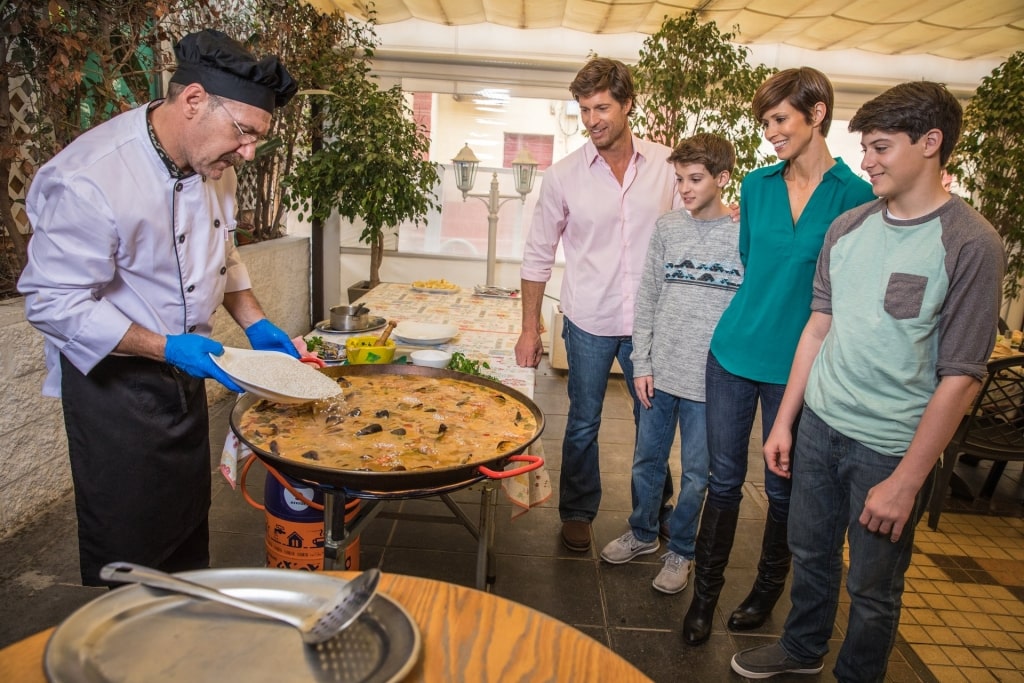
Paella cooking show in Cartagena
Ready to uncover this gem of a city? Browse our cruises to Cartagena, Spain and plan your perfect day in southern Spain.
